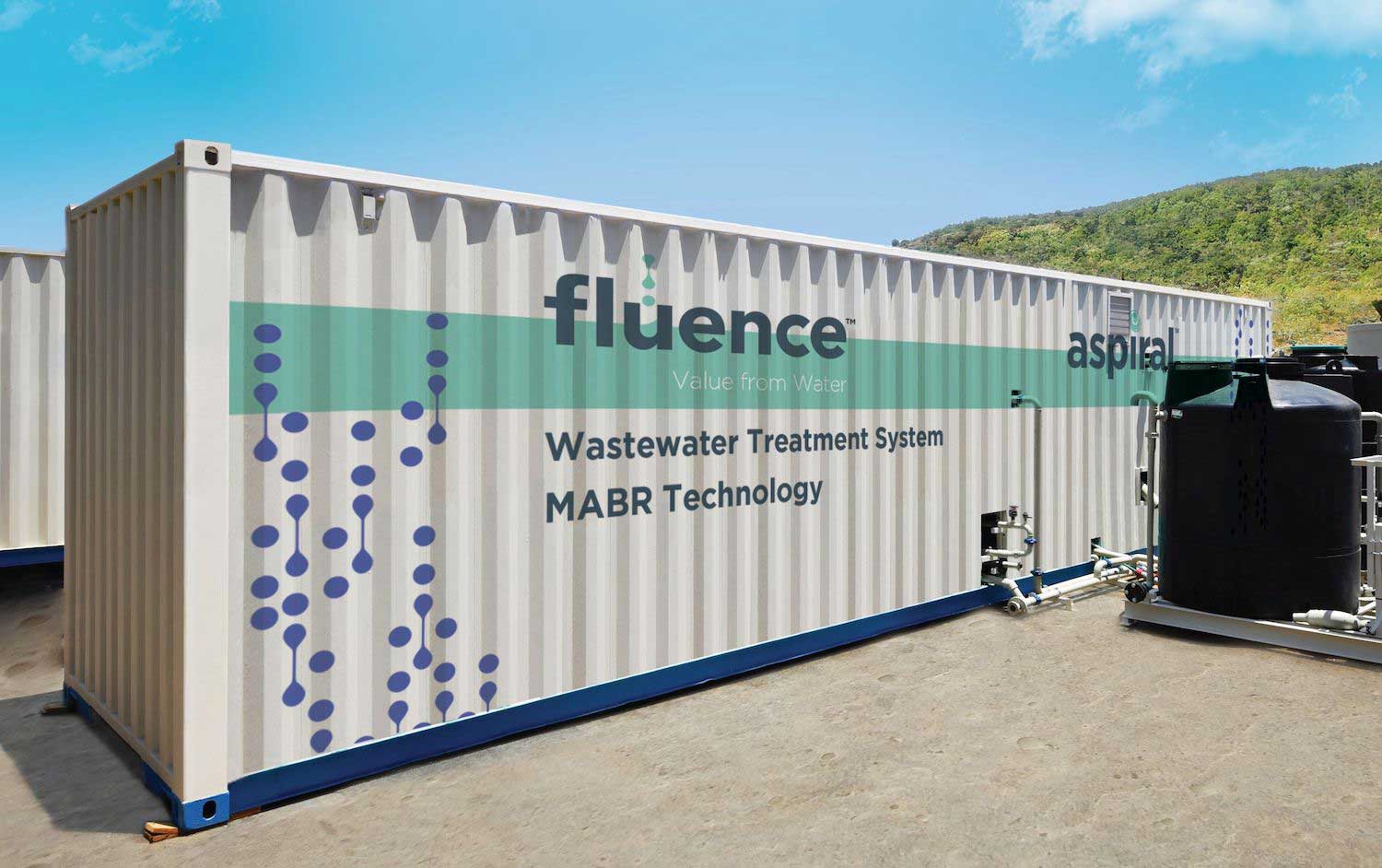
Fluence’s Aspiral™ MABR wastewater treatment systems are packaged in shipping containers for quick commissioning.
Technological advances are making reuse an increasingly attractive option
Water managers worldwide have understood the necessity of embracing wastewater reuse for years, but since the well-known “yuck factor” associated with potable reuse has made it a hard sell in the United States, the discussion has largely remained academic here.
It seems, however, that 2018 may be the year the dam breaks, and the discussion floods into the public realm. Cape Town, South Africa, so far has only narrowly averted its “Day Zero,” the day its taps would simply run dry, and the developed world seems to have finally stopped to listen. If it can happen to a modern city like Cape Town, it can happen anywhere without adequate planning and investment in infrastructure.
The media is paying more attention to water resource management, and water-stressed regions are realizing that wastewater is wasted at great cost, certainly enough cost to overcome biases against about potable reuse.
A ‘Golden Decade’ for Water Reuse?
Across the globe, water reuse seems to be “on the verge of a golden decade,” according to Christopher Gasson, publisher of Global Water Intelligence. Gasson said:
One thing is missing however: technology. […] On the wastewater side, the obstacle to growth is not really lowering the cost of the process. […] It is about technologies that help change the paradigm. Specifically, we need decentralised systems that reduce the need for investment in collection networks, real-time water quality monitoring systems which give the public confidence in direct potable reuse […]
What is decentralized treatment? It’s bringing treatment to exactly where it’s needed. In a broad sense, it avoids build-out of large municipal or regional infrastructure, which can be expensive in terms of building cost, footprint, environmental impact, and maintenance.
Decentralization favors strategically siting ideally scaled treatment systems as close to the source of generation (and demand) as possible, thus removing the need for extensive, costly pipelining. Other benefits of decentralized treatment systems include treatment of wastewater before it becomes a larger job due to dilution by large volumes of stormwater in sewer systems. Also, because each situation is unique, treatment can be tailored to specific needs.
Technology Within Reach
While Gasson believes the required technological advances are within reach, at Fluence, we believe that paradigm-changing technology is already here. According to Fluence CEO Henry Charrabé:
We believe Fluence has addressed the missing piece with our highly innovative MABR technology, which vastly reduces the energy historically necessary for wastewater treatment plants. Not only does MABR reduce the high operating costs associated with wastewater treatment, but our Smart Packaged Aspiral™ systems fill the exact gap Gasson mentions: a reliable, decentralized, innovative, and fast-to-deploy solution for wastewater treatment challenges anywhere around the globe.
MABR — short for membrane aerated biofilm reactor — is a technology that uses passive aeration to reduce the energy needed for aeration of sewage by as much as 90%, which means that it can be powered by solar panels off the electrical grid. In addition, the MABR process includes simultaneous nitrification-denitrification via a biofilm that develops on the surface of the membrane. MABR treatment removes large amounts of TN and TP, and reduces the need for addition of carbon sources like methanol, creating an effluent suitable for reuse in irrigation, and even as drinking water with separate tertiary treatment.
Packaged wastewater treatment systems like Aspiral are especially suited to installation away from metropolitan systems. They can be used in resorts and villages due to Aspiral’s low-noise, low-odor treatment. The low energy requirement also favors use in remote mining and petroleum industry installations.
Aspiral is packaged in standard shipping containers for quick and easy installation, and the solution is scalable by using several units in tandem. Because of this, Aspiral’s capacity ranges from to treat 20 to 2,000 m3d.
Solving Freshwater Supply Problems
The coming decade may in fact be when wastewater reuse comes into its own. In the 2000s, advances in technology lowered the cost of the desalination process and set off a desalination boom. Now, disruptive technology like Fluence’s Aspiral is poised to spark a wastewater reuse boom.
Decentralized wastewater treatment stands to increase efficiency and widen access to quality wastewater treatment to fuel the reuse revolution
